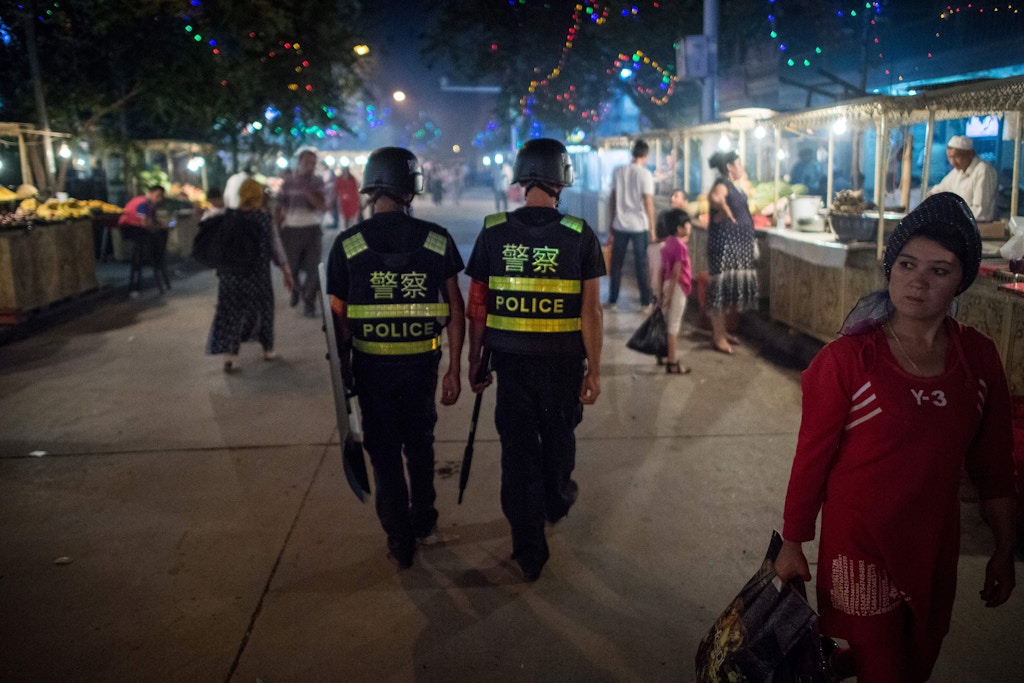One Million Muslim Uighurs Have Been Detained by China, the U.N. Says. Where’s the Global Outrage?

Police patrol in a night food market near the Id Kah Mosque in Kashgar in China’s Xinjiang Uighur Autonomous Region on June 25, 2017, a day before the Eid al-Fitr holiday.
Photo: Johannes Eisele/AFP/Getty Images
Dogged by protests and revolts from a Turkic-speaking Muslim minority called the Uighurs in the vast and autonomous Central Asian border region of Xinjiang — or East Turkestan, as it is historically referred to by the Uighurs — the Chinese spotted an opportunity. In the weeks and months after 9/11, Beijing began submitting documents to the United Nations alleging that the East Turkestan Islamic Movement, or ETIM — a group that few people had ever heard of, or could even confirm the existence of — was a “major component of the terrorist network headed by Osama bin Laden” and “an important part of his terrorist forces.” By September 2002, both the U.N. and the United States had listed ETIM as a “terrorist organization” — throwing the Uighurs under the geopolitical bus.
One. Million. People. There are around 11 million Uighurs living in Xinjiang, which means that almost one in 10 of them has been detained.
Fast forward 17 years:
MySpace Tweet Facebook Facebook
Comment
-
Comment by Boris on August 13, 2018 at 6:52pm
-
reports that 1 million ethnic Uighurs in China are held in what resembles a “massive internment camp
http://12160.info/page/u-n-says-it-has-credible-reports-that-1-mill...
"Destroying the New World Order"
THANK YOU FOR SUPPORTING THE SITE!
Latest Activity
- Top News
- ·
- Everything
How the Government Uses Fear-Mongering to Alter Your Brain
FB_IMG_1710523455761
Rebuilding Khazaria
MSM Admits US Funding Al-Qaeda & Taliban Terror Attacks
MSM Admits US Funding Al-Qaeda & Taliban Terror Attacks
FB_IMG_1710523455761
The saddest post I've ever read. ( vaccine victim speaks out. )
© 2024 Created by truth.
Powered by
![]()
You need to be a member of 12160 Social Network to add comments!
Join 12160 Social Network